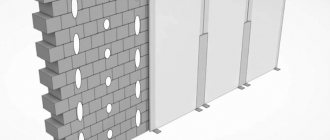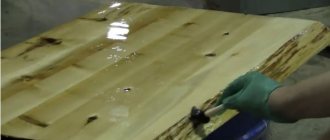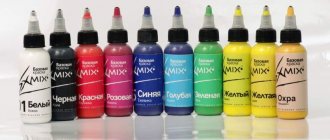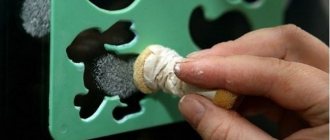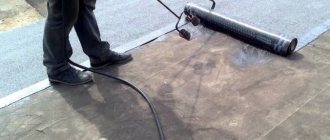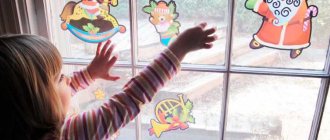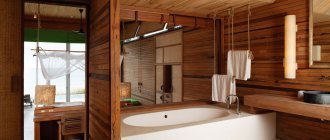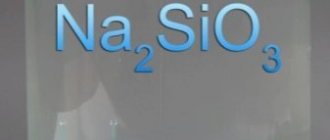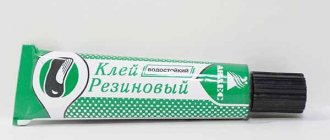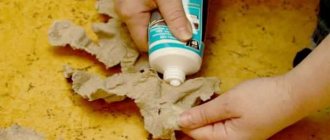Sometimes everyone is faced with the need to glue glass or various objects made from this material. In such situations, it becomes necessary to look for a special transparent glue for glass, which guarantees the fastest and, at the same time, effective gluing of products.
- Required properties of glass adhesive
- Adhesive for glass products: types
- Polyurethane based
- Cyanoacrylate
- PVA
- Heat resistant
- Optic
- Polymer based
- Silicone
- Conditions for using adhesives
- Gluing glass to glass: instructions
- How to glue glass to metal?
- Bonding glass to wood
- Useful tips
In fact, inconspicuousness and transparency in most cases are the main criteria by which buyers purchase glass glue. It is important to select a composition that has a high degree of adhesion and bond strength.
This article is devoted to the issues of choosing a transparent composition for connecting glass surfaces. The publication addresses the following questions:
- Selecting transparent glass adhesive. Types and principles of using adhesive compositions.
- Properties of PVA, polyurethane, heat-resistant, optical, cyanoacrylate, polymer mixtures.
- Instructions on how to glue glass to metal, wood and other glass products. Valuable recommendations for performing correct gluing.
Required properties of glass adhesive
Before gluing glass, it is important to purchase a high-quality composition. Let's figure out what technical characteristics a special product should have for this purpose.
So, the main requirements for the properties of this material are:
- improved adhesion to different types of coatings;
- transparency and invisibility of the glue on the treated surface;
- fast setting;
- viscosity, some ductility, elasticity;
- resistance to temperature changes, as well as to conditions of high humidity;
- safety for human use;
- Possibility of storing the product with the condition of further use after the first opening.
Interestingly, not every type of adhesive combines such characteristics. For example, too cheap glass glue often does not have the listed features. For this reason, craftsmen recommend paying attention to more expensive products. After all, they are, as a rule, of higher quality and meet consumer expectations.
Requirements
Of course, a lot depends on the materials and the scope of use. But there are requirements that are relevant for any glass adhesive:
- High degree of adhesion (or adhesion) of surfaces.
- Composition transparency.
- Minimum setting time.
- Elasticity.
- Viscosity.
- Fluidity.
- Resistant to temperature changes.
- Resistant to wet environments.
- Possibility of long-term storage.
- Environmentally friendly.
To choose a good glue for glass, you need to consider its types and technical characteristics in detail.
Adhesion manifests itself primarily in “contact” with surfaces. There should be no problems during the application of the adhesive composition. If you want the seam to be as invisible as possible, use a transparent compound. Glass products of the correct geometric shape can be fixed using a clamp, but this is not always effective, so it is important to ensure that the “setting” occurs quickly.
The composition must take into account the characteristics of the glass surface.
The degree of viscosity or fluidity depends on the surface of the parts. For example, when gluing earthenware and porcelain surfaces, it is important that the glue spreads in a uniform layer over the surface. If we are talking about joining glass sheets, then a higher degree of viscosity and a lower degree of fluidity will be required so that the substance is on the surface before gluing to the second part.
Glass is a material with reduced adhesion, which makes it difficult to glue.
For glass products that are subject to heavy loads, there is another requirement. The fixation must be strong and at the same time elastic enough so that the product does not break again during use. The adhesive composition should remain mobile after drying.
High adhesion of the glue is a prerequisite, since glass is smooth and repels water.
Glass products are often used in different temperature conditions (for example, boiling water is poured into teapots and teapots), which means that the glue must be appropriate. And the vases and glass shelves that decorate the interior of your home simply must also be environmentally friendly, that is, not emit harmful substances.
The glue should be transparent so that the seam remains invisible.
Adhesive for glass products: types
Clear glass adhesive is not uncommon. The consumer market offers a wide range of adhesive materials for various needs. It’s easy to get confused in such a comprehensive range if you don’t understand their features and scope of application at all.
As you can see, in order to glue glass, it is important to navigate the adhesive materials specially designed for this. In order to help make the right choice of transparent glass adhesive, the article below presents its most popular types with detailed characteristics.
Polyurethane based
One of the optimal adhesive materials that helps glue glass together is a polyurethane mixture. Suitable for working with smooth surfaces. This fact explains the popularity of the product for interacting with glass surfaces.
Conventionally, these goods can be divided into two main categories:
- Single-component. They attract attention because they are immediately ready for use. After all, the mixture eliminates the addition of additional components.
- Two-component. They are characterized by increased flexibility regarding the time of complete polymerization. The exact period depends on the amount of hardener in the product. The main advantage of the product is its ability to be restored.
A polyurethane adhesive mixture is combined from resins and active substances that provide viscosity, are responsible for consistency and for the speed of complete drying. Composite additives are used to strengthen the seam.
Cyanoacrylate
Glass gluing can also be done using cyanoacrylate type glue. Positioned by manufacturers as a universal remedy. In addition, these types of glue can be used in the production of electrical appliances. There is both a transparent mixture and a composition with a yellowish tint.
The main advantages are:
- rational cost;
- liquefied consistency;
- fast setting;
- increased seam strength.
Manufacturers of cyanoacrylate glue made sure that the use of the product was as comfortable as possible for the consumer. So, it comes in tubes made of plastic or aluminum. In this case, the product does not have to be used at once. Just close the tube tightly. Then it is guaranteed to last a long time without any changes until further use.
In addition, cyacrine compositions are also found in gel format. At room temperature, the mixture begins to harden in literally three seconds. You should only handle this adhesive mixture with gloves, because getting it on your hands can cause serious skin burns. Before purchasing transparent glue, read the instructions, because this adhesive is compatible with certain types of plastic.
PVA
Glass can also be glued using PVA. Polyvinyl acetate-based glue is found in any home and is often used in everyday life. Naturally, the effectiveness of gluing glass is questionable, because PVA does not have a high enough degree of adhesion.
Another disadvantage is that some of these products can leave marks on the seams when gluing. The main advantage of PVA when gluing glass is, of course, its availability. This composition can be easily found in almost all stores, and at a low price.
Heat resistant
Heat-resistant transparent glass adhesive is intended for gluing those objects and surfaces that will subsequently be exposed to elevated temperatures.
For example, heat-resistant adhesive can be used for bonding:
- Ovens, electric kettles. When restoring kitchen stoves.
- For other equipment with glass inserts.
The advantage of the adhesive is that the created adhesive seam will not melt when exposed to elevated temperatures. This effect was achieved thanks to the addition of special amplifiers as components of the product.
Optic
The main purpose of this glue is gluing optical devices. In particular, it is used by manufacturers of photographic equipment and other devices that require full transmission of ultraviolet rays.
This transparent adhesive is extremely rarely used in domestic conditions. Most often it is used by professionals, which means finding a product on free sale is a difficult task. And, naturally, the disadvantage of such products is their rather high cost, which is explained by the high cost of the components of the composition.
Polymer based
It fully sets and dries primarily due to exposure to ultraviolet rays. Allows you to firmly glue glass fragments. This clear adhesive must be used wisely and only on certain surfaces. At least one of the glasses must be transparent to provide light access.
In order for the surfaces to be glued to fully adhere to each other, they must be placed under a specially designed lamp, which will ensure complete hardening. Among the advantages of this type of glue are:
- complete transparency of seams;
- tolerance of high air temperatures, high humidity;
- as well as excellent tolerance to mechanical loads.
All users cite the relatively long drying time of the material as an absolute disadvantage.
Silicone
In addition, glass can be glued using a composition such as silicone glass adhesive. It is a special transparent mixture of high molecular weight polymers with the addition of several components. Thanks to them, such adhesives are characterized by resistance to a variety of bacteriological environments.
Silicone is an environmentally friendly material, so it can even be used in the food industry. The exact drying time depends on the complete list of components of the product, humidity and air temperature in the room where the work is being carried out.
Aquarium resin
All this is also true when epoxy resin is used to glue together parts of an aquarium, or for crafts installed inside it. These can be, for example, beautiful, but unusable due to the fact that they are from coniferous trees or driftwood. In such cases, it is customary to coat their surface with a water-insulating composition, which may well be epoxy. The main rules for such decisions:
- Do not use epoxy glue with its additives, but use pure epoxy resin with a hardener.
- After coating with epoxy, allow products to soak for at least twice the recommended amount of time. After this, keep the product in the oven for at least half an hour at a temperature of 60-70°C degrees.
- Soak the product in water for three to four days, changing the water regularly. If the epoxy has turned white, dry it in the oven for another half hour.
The situation is more complicated with the toxicity of epoxy compounds. The best varieties of resin always indicate whether it has bactericidal properties. So, they are excellent in themselves, but these properties can be detrimental to the inhabitants of the aquarium. If not for fish, then for some rare algae or snails for sure.
Conditions for using adhesives
Are you wondering how to glue glass? When working with glass glue, a number of requirements and specific rules must be observed. So, you need to act with extreme caution, because the transparent material may become stained due to improper use of the adhesive mixture.
Remember that the glass surface is quite fragile, so you cannot apply excessive mechanical pressure to it. When drops of glue accidentally fall on the front surface of the glass, wash off its remains using special solvents. If you are going to interact with an aggressive adhesive, then take care to protect your hands.
Making glue at home
Special means for gluing glass surfaces are not always available. In this case, homemade mixtures will help:
- The simplest glue is made from a mixture of equal amounts of ash and bone glue. Before using this product, the parts must be warmed up.
- The glass parts are connected with a mixture of 1 part casein glue and 10 parts silicate glue.
- If you need to repair a small glass, garlic juice can replace regular glue.
- To join glass and wood, a mixture of wood glue and ash is used.
Large glass parts are glued together with a product that consists of the following components:
- 1 part beeswax;
- 5 parts drying oil;
- 10 parts rosin;
- 5 parts chalk;
- 2.5 parts cement.
First, combine all the components except cement and heat to a boil. After this, the heating is turned off and the mass is cooled to +50 degrees. Then cement is added to the total mass and mixed well.
Gluing glass to glass: instructions
First, prepare the necessary parts, clear glass glue and put on gloves. Next, proceed to the actual work:
- We clean the coatings of the parts to be glued and wait until they dry.
- Apply transparent glue to one of the parts that need to be joined.
- Immediately we press them to each other. There is no need to wait some time before compressing, because setting occurs relatively quickly.
- We wait until the adhesive layer dries.
In fact, the main thing in such a process is maximum caution when working with sharp corners of glass. You also need to focus on the instructions from the manufacturers, who may note some important nuances of correct work with the produced compounds.
How to glue glass to metal?
Don't know how to glue glass to metal? Everything is also simple here if you manage to choose the right transparent glue for glass and metal. So, you will need to purchase UV glue or another product with a gel consistency. This is necessary so that the seam remains in the right place and does not spread over the surface being treated.
Both glass and metal surfaces need to be degreased. In addition, in order to glue glass and metal, they should be heated to forty degrees. This same process will help dry the parts and also remove any remaining adhesive from the previous one.
We place the seam horizontally, and apply transparent glass glue to the part. We press using suction cups or a magnet for high-quality polymerization. We wait until the adhesive has completely cured according to the time specified in the instructions for the product.
Bonding glass to wood
Now let's look at the question of how to glue glass to wood. According to the algorithm of actions, you can safely focus on the principles of bonding glass to metal.
First of all, you need to clean the coating and sand the wood material. This will ensure a more even seam, and, accordingly, better quality when gluing the wood onto the glass. It is recommended to choose a paste or gel based adhesive.
How to properly glue two glasses
The technology for gluing glass is not complicated, but it is still recommended to adhere to it. The quality of the resulting seam largely depends on the quality of surface cleaning.
Remaining grease and other contaminants should be removed. You will need to thoroughly wipe it with a rag soaked in kerosene, gasoline, white spirit or alcohol, 646 solvent. Acetone is considered a universal degreaser.
It is not recommended to use household products such as Mister Muscle.
Since all effective products are prone to active evaporation, and their vapors are harmful to humans, it is recommended to carry out work in a well-ventilated area.
The surfaces to be glued should be heated to + 30 C; for this it is convenient to use a hairdryer.
Before starting work, you will need to assemble all the parts to be glued on the table, check whether they fit together well; to make the work easier, you can use any available devices, magnets, stops, corner suction cups.
A minimal amount of glue is applied. It is convenient to use a dispenser to dispense glue.
Next, the process is carried out in accordance with the recommendations for the use of glue.
The surfaces treated with it are dried or joined immediately, fixed, subjected to loads and maintained for the recommended time.
Useful tips
Despite the fact that glass gluing seems complicated, it can be done quite quickly and without difficulty. To do this, just follow the instructions from the manufacturer and take care of your own safety.
It is recommended to purchase products for gluing glass exclusively in specialized stores in Moscow, which can provide the correct storage conditions for the goods. Expired transparent glass adhesive should not be used. The properties of compounds with an expired shelf life are lost.
To clearly understand the features of transparent glass adhesive, we recommend watching the thematic video:
How to glue glass and metal, wood, plastic
Bonding with UV glue
Among the best means for joining glass to glass or metal, we should note compounds that acquire special strength after treatment with an ultraviolet lamp. The connections obtained in this way have high strength qualities.
An important condition: the dimensions of the lamp must allow uniform irradiation of the seam.
During work, safety precautions should be observed:
- It’s better to wear gloves on your hands,
- eyes should be protected with goggles.
During processing with a lamp, the parts to be joined must not be moved.
Let's watch a video about gluing glass with UV glue:
Getting a reliable connection between glass and plastic is not at all easy
Due to the very smooth surface and the absence of pores on it, the weak chemical activity of the polymer material, and the low level of adhesion, not every glue can provide a reliable connection of plastic.
Considering this point, in industry and construction they often use a more reliable option - welding.
If there is a need to glue plastic parts at home, you must take into account the type of plastic; different types differ in properties and require an appropriate composition for gluing.
Adhesives for plastic products are divided into categories:
Each type of glue for plastic has a special mark - an abbreviation indicating the type of material for which it is intended.
We invite you to watch an interesting video; its creator suggests using one little trick that will significantly improve the quality of connecting seams:
Gluing wood to glass is quite simple.
The simplest and cheapest options:
- liquid nails - provide a reliable connection, do not require surface preparation, the seams are slightly noticeable, but are not afraid of moisture.
- PVA intended for carpentry work. It connects the parts well, but the seams have low moisture resistance and are not recommended for outdoor use.
- 3M TS230, is thermally activated, a properly executed connection has very high strength properties, suitable for gluing glass surfaces to wood, plastic, including polystyrene and acrylic polymers.
- Scotch-Weld two-component adhesive has excellent qualities; DP 105, which is capable of tightly joining surfaces of different types, is especially highly valued in this line of adhesives. It has sealing properties and is absolutely transparent, even when applied in a thick layer. The basis for the manufacture of this super product is epoxy resin.
You can glue wood and glass using glue or double-sided tape
For those who don’t particularly like fiddling with glue, there is an excellent option for joining wood and glass using high-quality double-sided tape ZM.
Especially if the glass is opaque, for example, if you need to mount a mirror on a cabinet door.
Let's summarize: gluing glass to glass, wood and plastic is quite possible, even at home you can achieve a good result.
Of course, subject to choosing the right glue and strictly following the recommendations for organizing the process of joining materials.
When performing work, we must not forget about observing personal safety rules, including protection of skin, eyes, and respiratory organs.
Noticed a mistake? Select it and press Ctrl+Enter to let us know.
>
How to glue glass in the oven
For the installation of glass coverings that are periodically in contact with high temperatures, it is necessary to use heat-resistant sealants that can withstand heat in the range from 100 degrees to 300.
@i.ytimg.com
In addition, you should choose specific mixtures:
- non-toxic;
- with harmless chemical compounds;
- do not release toxic components when heated;
- no unpleasant odor.
A suitable adhesive should behave inertly when interacting with chemicals and metal surfaces.
The cost of heat-resistant goods is about 250 rubles per package.
What glue is suitable
The list of fixing substances is quite wide. The following types give excellent results in these parameters:
- Dow Corning 736.
- RTV 100.
- Kraftool Kraftflex FR150.
Let's talk about each type in more detail.
Dow Corning 736
The fireproof chemical consistency allows you to firmly hold glass, metal panels and coatings. The substances of these brands are environmentally friendly. They can be used to secure surfaces that come into contact with food and medications.
The chemical composition can withstand heating conditions from -65 °C to + 260 °C. Dries in 17–20 minutes at room temperature at +23 degrees and with minimal humidity.
RTV 100
Heat-resistant silicone is intended for installation of furnaces and devices that operate at high temperatures. When interacting with light liquids (kerosene, acetone, alcohol) it dissolves. Dries within 20 minutes, firmly holds glass and metal coatings.
What characteristics should glue have?
A flat and smooth glass surface has low adhesion, which makes the gluing process quite difficult. The increased fragility of the material makes the work even more difficult. A good glass adhesive is characterized by the following properties:
- High adhesion to various surfaces.
- Transparent structure. This is especially in demand when fastening small parts, when an inconspicuous seam is required.
- Short drying time.
- Environmentally friendly and non-toxic.
- Thick consistency.
- Good plasticity.
- Resistant to temperature fluctuations, as well as the ability to withstand high and low temperatures.
- Waterproof and waterproof once cured.
